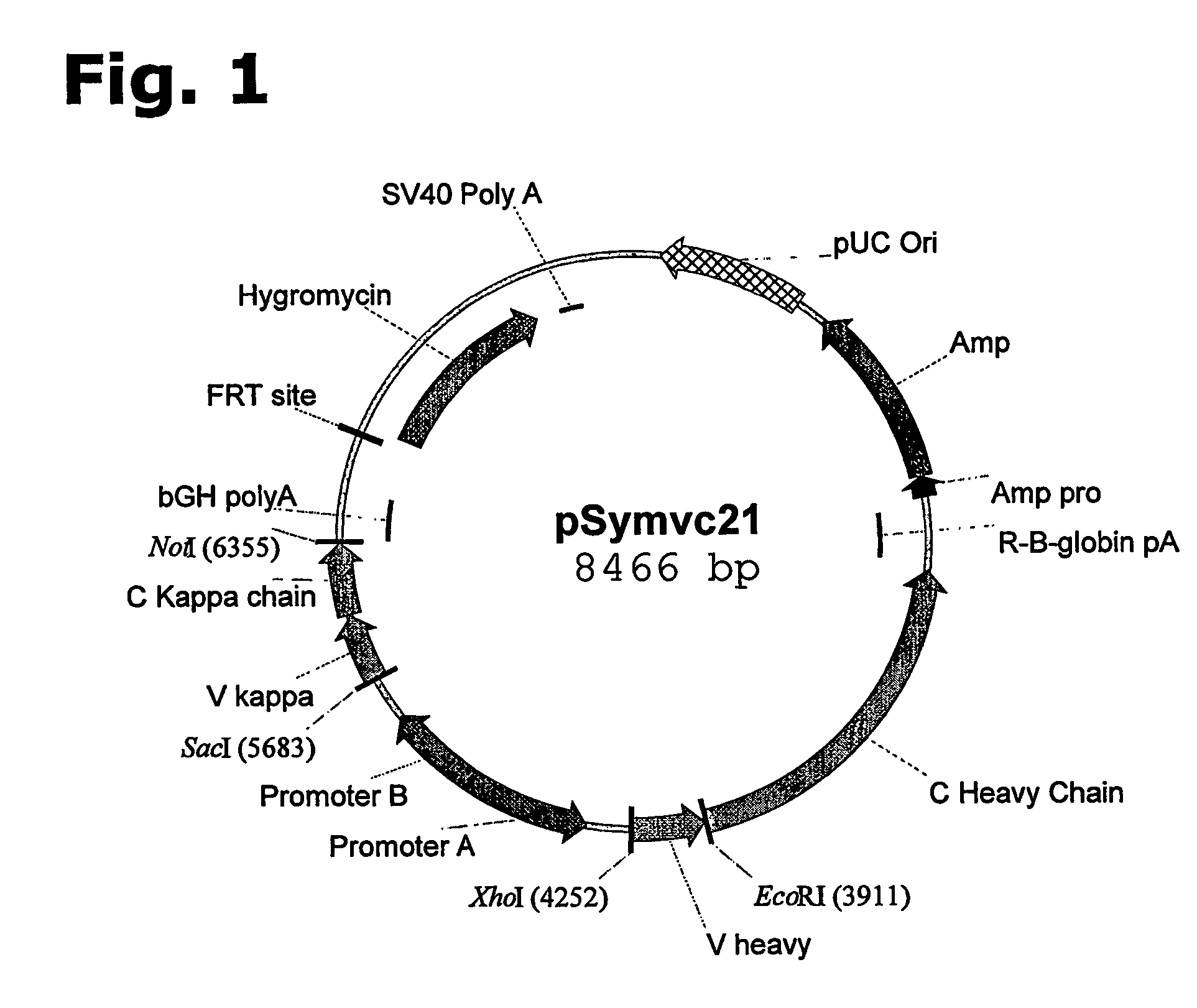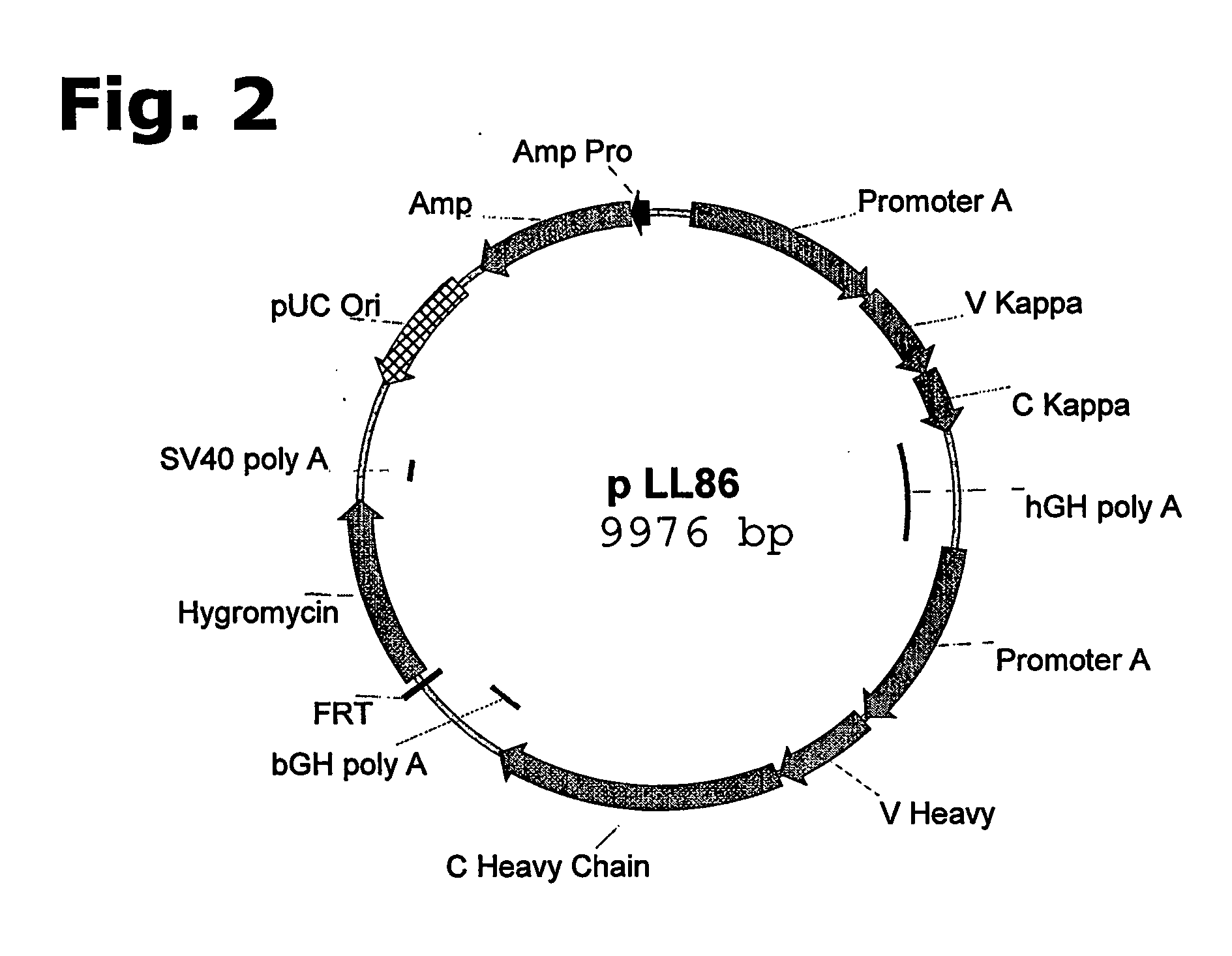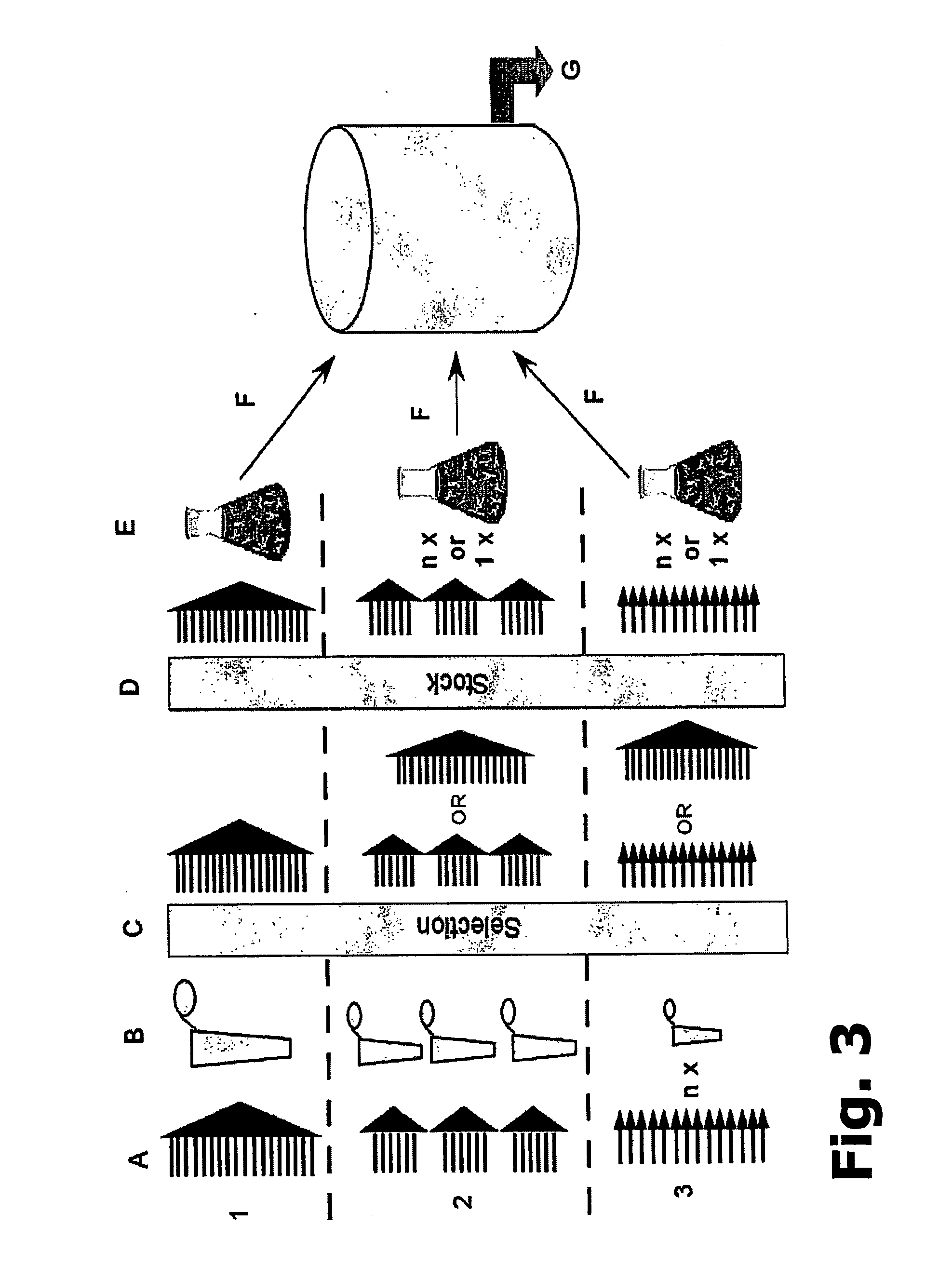Method for manufacturing recombinant polyclonal proteins
a technology for recombinant polyclonal proteins and manufacturing methods, applied in the field of recombinant polyclonal protein production technology platforms, can solve the problems of inability to effectively treat infectious diseases and cancers, lack of efficient therapies for monoclonal antibodies, and limited immunoglobulin use in the general population, so as to minimize unwanted batch-to-batch variation
- Summary
- Abstract
- Description
- Claims
- Application Information
AI Technical Summary
Benefits of technology
Problems solved by technology
Method used
Image
Examples
example 1
Site-Specific Integration Versus Random Integration
[0196] For the following transfection experiment, the CHO Flp-In cells (Invitrogen, Carlsbad, Calif.) were used. The efficiency of the system was tested using human secreted alkaline phosphatase (SEAP) as a reporter gene. Two plasmid constructs were prepared:
1. SEAP Inserted into pcDNA3.1hygro+ (Invitrogen, Carlsbad, Calif.) (for random integration)
2. SEAP Inserted into pcDNA5 / FRT (Invitrogen, Carlsbad, Calif.) (for site-specific integration)
[0197] The two plasmid constructs were very similar with respect to regulatory elements, i.e. promoter, polyadenylation etc. which made it possible to use the plasmids for comparing random integration with site-specific integration.
[0198] CHO Flp-In cells were transfected with plasmid construct 1 alone or plasmid construct 2 together with the recombinase-encoding plasmid pOG44 according to the procedure described by Invitrogen. Transfectants were selected using hygromycin and the product...
example 2
Design and Preparation of an Expression Vector for Site-Specific Integration in a Host Cell
[0200] An expression vector suitable for site-specific integration into a hot spot chromosomal region of a host cell may be assembled comprising the following DNA elements:
a) an FRT recombination site linked to the hygromycin resistance gene,
b) a pUC origin of replication,
c) an ampicillin resistance gene (bla),
d) a bla-promoter allowing expression of the ampicillin (bla) resistance gene,
e) gene(s), encoding a protein of interest (GOIs),
f) promoter(s) allowing expression of the GOI, and
g) optionally, additional transcriptional or translational regulatory elements, such as enhancers or UCOE's, for increased expression at the site of integration or an IRES.
[0201] To provide a better understanding of the construction of the expression vector, each of the elements are described in more details:
[0202] a) An FRT recombination site linked to the hygromycin resistance gene for Flp rec...
example 3
Evaluation of Polyclonality Preservation in the Manufacturing System Developed
[0213] In order to be able to evaluate the stability and reproducibility of the manufacturing system, a cell line expressing a polyclonal composition of distinct antibodies in known combination was prepared. The polyclonal antibody composition was termed the mini six composition. The library of nucleic acid sequences encoding the mini six composition was termed the mini six library.
(a) Clone Origin
[0214] The following sequences encoding Fab fragments (the genes of interest) with reactivity against antigens 1-6 were used in this example:
1. Ovalbumin (OVA). The Fab encoding fragments were selected from a murine anti-OVA phage display library.
2. Alkaline phosphatase (AP). The Fab encoding fragments were selected from a murine anti-AP phage display library.
3. β2-microglobulin (β2m). The Fab encoding fragments were cloned from the hybridoma BBM.1 (a gift from Dr. L. O. Pedersen, Denmark), which was g...
PUM
| Property | Measurement | Unit |
|---|---|---|
| Nucleic acid sequence | aaaaa | aaaaa |
| Level | aaaaa | aaaaa |
Abstract
Description
Claims
Application Information
 Login to View More
Login to View More - R&D
- Intellectual Property
- Life Sciences
- Materials
- Tech Scout
- Unparalleled Data Quality
- Higher Quality Content
- 60% Fewer Hallucinations
Browse by: Latest US Patents, China's latest patents, Technical Efficacy Thesaurus, Application Domain, Technology Topic, Popular Technical Reports.
© 2025 PatSnap. All rights reserved.Legal|Privacy policy|Modern Slavery Act Transparency Statement|Sitemap|About US| Contact US: help@patsnap.com



